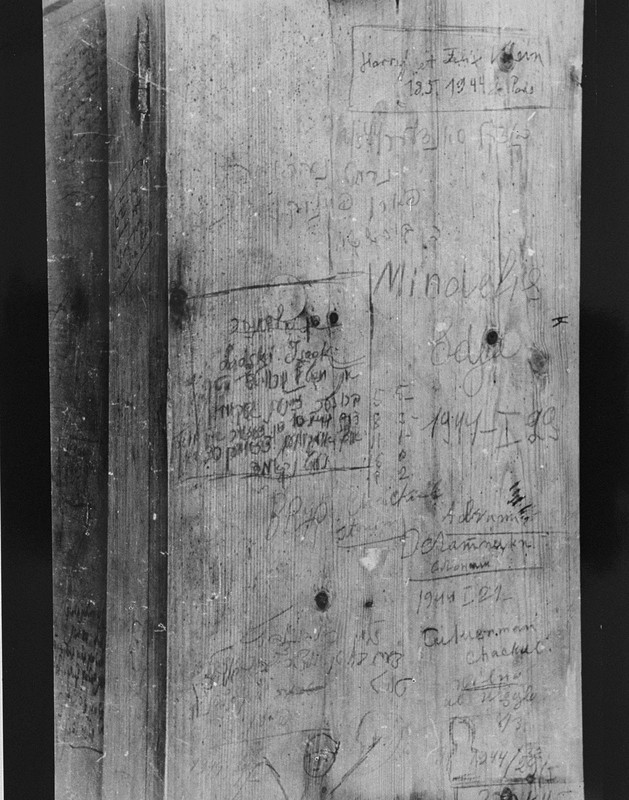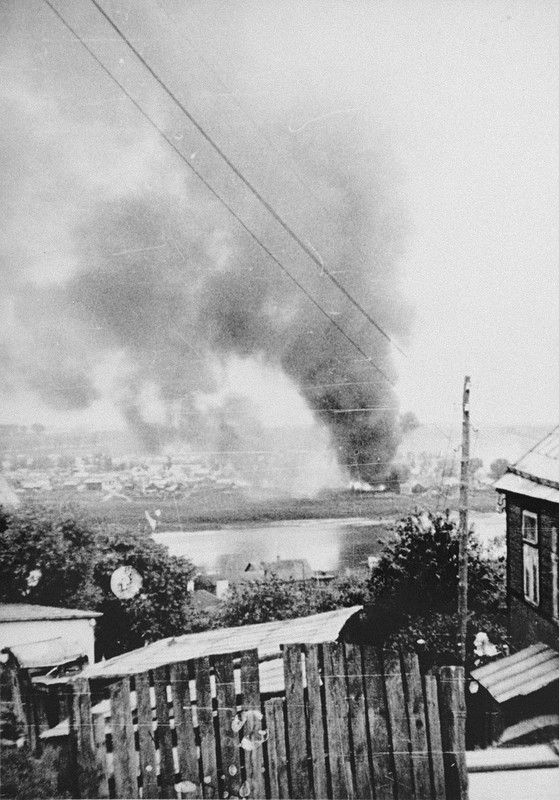Background: The Holocaust in Kovno
At the outbreak of World War II, Kovno was a thriving center of Jewish life. The city, which served as the capital of Lithuania during the interwar period, was home to nearly 40,000 Jews, which was a quarter of the total population. In addition to its forty synagogues, Yiddish and Hebrew schools, and Jewish hospital, Kovno was home to Yeshivas Knesses Yisroel, or the Slobodka Yeshiva (rabbinical college), one of the most prestigious institutions of Jewish study in Europe (USHMM).
Trouble began for the Kovno Jewish community in June of 1940, when the Soviet Union occupied Lithuania. The Jews in Kovno welcomed the invasion, realizing that life under Soviet occupation was vastly preferable to life under the Nazis (Epstein 266). However, many Lithuanians despised the Soviet Union, and they directed blame for the occupation at the Jews (USHMM). When Nazi Germany invaded the Soviet Union a year later, many welcomed Nazi rule and started murdering Jews in anticipation of the Nazi arrival (Epstein 265). By the time the German Army took control of Kovno on June 24, 1941, thousands of Jews had been murdered by Lithuanians, with another 800 Jews killed immediately after the Nazis arrived.
On July 10, two weeks after the Germans arrived in Kovno, they began preparations for a ghetto in Vilijampole (also called Slobodka), a heavily Jewish neighborhood which was across the river from downtown. The Lithuanian residents were ordered to leave, and many of the Jews residing there had been murdered in the pogrom, which made room for the rest of the Jews to move in. By August 15, around 30,000 Jews were packed into this small neighborhood, which originally held only 4,000 people. To help run the ghetto, the Germans created an Eltstenrat, or Council of Elders, led by Dr. Elhanan Elkes (Epstein 266).
Shortly after the ghetto was established, liquidations began. Kovno was surrounded by a series of forts from the nineteenth century, and one of them, the Ninth Fort, served as an extermination camp for the Nazis. The ghetto was divided into two parts — one large and one small — and the Germans would use the smaller one to hide the murders from residents of the large one, moving people from the large ghetto to the small ghetto before bringing them to the Ninth Fort (Epstein 266-7). On October 4, however, the Germans destroyed the small ghetto, sending its 1,800 residents to the Ninth Fort as part of a series of mass murders committed in Fall of 1941. The killing reached its apex on October 29, when, in what was called the “Great Action” (USHMM), 9,200 Jews were shot at the Ninth Fort in a single day.
Eventually, the killing ended, and from 1941 to 1943 the ghetto provided labor for the German war effort. Many residents were used as forced laborers at various sites near the ghetto, and Dr. Elkes and the Eltstenrat created special workshops that employed women, children, and the elderly in the ghetto. During this time period, a ghetto underground was active, with both Zionist and Communist movements (Epstein 267). In 1943, these groups joined to form the General Jewish Fighting Organization, which, with the help of the Eltstenrat and its Jewish police, helped 300 people escape the ghetto to join partisans that were active in the local forests (USHMM).
The Eltstenrat hoped that the Jews’ value as laborers would spare them from death, but this hope evaporated in the fall of 1943, when the SS took control of the ghetto. At this stage, only 17,000 Jews remained in the ghetto (Elkes, qtd in Seidler 89). The SS made the ghetto into a concentration camp, and sent 3,500 residents to various subcamps, and on October 26, they deported 2,700 — those who could work were sent to labor camps in Estonia, and those who could not were sent to Auschwitz, where they were killed (USHMM).
As the Nazis started losing on the Eastern front, they decided to evacuate the ghetto. On July 8, 1944, most of the ghetto’s residents were deported to the Dachau and Stutthof concentration camps. The Germans then destroyed the ghetto, killing the 2,000 Jews that remained in the process, many of whom were burned to death in their bunkers. On August 1, 1944, the ghetto was finally liberated by the Soviet Army (USHMM). Out of the vibrant community of almost 40,000 Jews that lived in Kovno before the war, only 2,000 survived (Yad Vashem).





